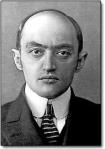 You, too, can meet a venture capitalist. Bain
Capital Ventures, with $1.5 billion under management and
early-stage investments in companies like LinkedIn, Staples
and DoubleClick, is reaching out to the masses.
You, too, can meet a venture capitalist. Bain
Capital Ventures, with $1.5 billion under management and
early-stage investments in companies like LinkedIn, Staples
and DoubleClick, is reaching out to the masses.
On Wednesday, the venture capital affiliate of the private equity firm Bain Capital opened a virtual center connecting entrepreneurs with like-minded individuals and its network of industry experts. The Bain Capital Ventures Innovation Center, leveraging social networks on Facebook and LinkedIn, may seem like just another network for entrepreneurs. But it is providing regular public access like no other major venture capital firm has before, mainly to help entrepreneurs refine their business ideas.
Each Friday from 3 to 5 p.m. Eastern time, entrepreneurs can meet with at least one Bain Capital Ventures staff member (principal, managing director or associate) for 15 to 20 minutes at Bain Capital Ventures’ Boston office or at the Venture Cafe in Cambridge, Mass. Some of 33 managing directors, principals and associates will rotate each week into the office hours.



 Spain’s victory yesterday in the World Cup in Johannesburg marks the conclusion to an exciting competition. However, with the media pointing to some of the dashed economic expectations among South Africans these past few weeks, I decided to inquire a little more into the entrepreneurial part of South Africa’s economic development equation which led me to uncover some important trends and opportunities suggesting that the country might be well on its way to achieving the goal set forth by the country’s new president, Jacob Zuma, to create 4 million new jobs by 2014.
Spain’s victory yesterday in the World Cup in Johannesburg marks the conclusion to an exciting competition. However, with the media pointing to some of the dashed economic expectations among South Africans these past few weeks, I decided to inquire a little more into the entrepreneurial part of South Africa’s economic development equation which led me to uncover some important trends and opportunities suggesting that the country might be well on its way to achieving the goal set forth by the country’s new president, Jacob Zuma, to create 4 million new jobs by 2014.
![[sbcash1]](http://si.wsj.net/public/resources/images/OB-JF292_sbcash_D_20100712132249.jpg) For an entrepreneurial start-up, landing that first check from an investor is a milestone.
For an entrepreneurial start-up, landing that first check from an investor is a milestone.
 Perhaps you noticed that Ohio recently lost a successful entrepreneur who moved his business to Florida, where taxes are lower.
Perhaps you noticed that Ohio recently lost a successful entrepreneur who moved his business to Florida, where taxes are lower. Recently, we were speaking with Becky McCray, an entrepreneur from Alva, OK, who is writing a book on how small town entrepreneurship relates to entrepreneurship in the global economy.
Recently, we were speaking with Becky McCray, an entrepreneur from Alva, OK, who is writing a book on how small town entrepreneurship relates to entrepreneurship in the global economy. It is widely believed to be the standard route for academics starting their own business: disclose an invention to the university, get it patented and venture forth into the spin-out world. But an extensive survey has found that this is not how the majority of companies are started by US academics, suggesting that government and universities are missing an opportunity in their quest to boost entrepreneurial activity.
It is widely believed to be the standard route for academics starting their own business: disclose an invention to the university, get it patented and venture forth into the spin-out world. But an extensive survey has found that this is not how the majority of companies are started by US academics, suggesting that government and universities are missing an opportunity in their quest to boost entrepreneurial activity. Last Wednesday night, Joel Kotkin--a futurist and (sub)urban
historian--squared off in a debate against Christopher Leinberger, a
developer, consultant and proponent of "walkable urbanism." The topic:
"America 2050: What Will We Build." The pair tangled on four key issues:
demographics; housing supply &
demand; transport; and density. Kotkin was in hostile territory: a
roomful of Manhattan architects and academics belonging to the Forum for
Urban Design.
Last Wednesday night, Joel Kotkin--a futurist and (sub)urban
historian--squared off in a debate against Christopher Leinberger, a
developer, consultant and proponent of "walkable urbanism." The topic:
"America 2050: What Will We Build." The pair tangled on four key issues:
demographics; housing supply &
demand; transport; and density. Kotkin was in hostile territory: a
roomful of Manhattan architects and academics belonging to the Forum for
Urban Design.  Entrepreneurs aren't the only ones struggling to find capital in these choppy economic times. The venture capitalists who write the checks are encountering their own hard realities on the fundraising trail. A report out today from Thomson Reutuers and the National Venture Capital Association indicates that dollar commitments to VC funds dropped by 49 percent during the first quarter as just 38 funds raised $1.9 billion.
Entrepreneurs aren't the only ones struggling to find capital in these choppy economic times. The venture capitalists who write the checks are encountering their own hard realities on the fundraising trail. A report out today from Thomson Reutuers and the National Venture Capital Association indicates that dollar commitments to VC funds dropped by 49 percent during the first quarter as just 38 funds raised $1.9 billion. The Bill Gates and Khosla Ventures dream team are swooping in once again to provide much-needed cash to a worthy sustainable startup. The pair recently injected millions into nuclear power startup TerraPower, and now they're back again to invest $23.5 million in EcoMotors's series B funding round.
The Bill Gates and Khosla Ventures dream team are swooping in once again to provide much-needed cash to a worthy sustainable startup. The pair recently injected millions into nuclear power startup TerraPower, and now they're back again to invest $23.5 million in EcoMotors's series B funding round.
 Cilia are a must-have appendage, and they do much more than swat bodily currents—indeed, new research is suggesting they play an important role in development and disease.
Cilia are a must-have appendage, and they do much more than swat bodily currents—indeed, new research is suggesting they play an important role in development and disease.

 Very few people really know much today about the experience of
Very few people really know much today about the experience of 
 Dear Evil HR Lady,
Dear Evil HR Lady,